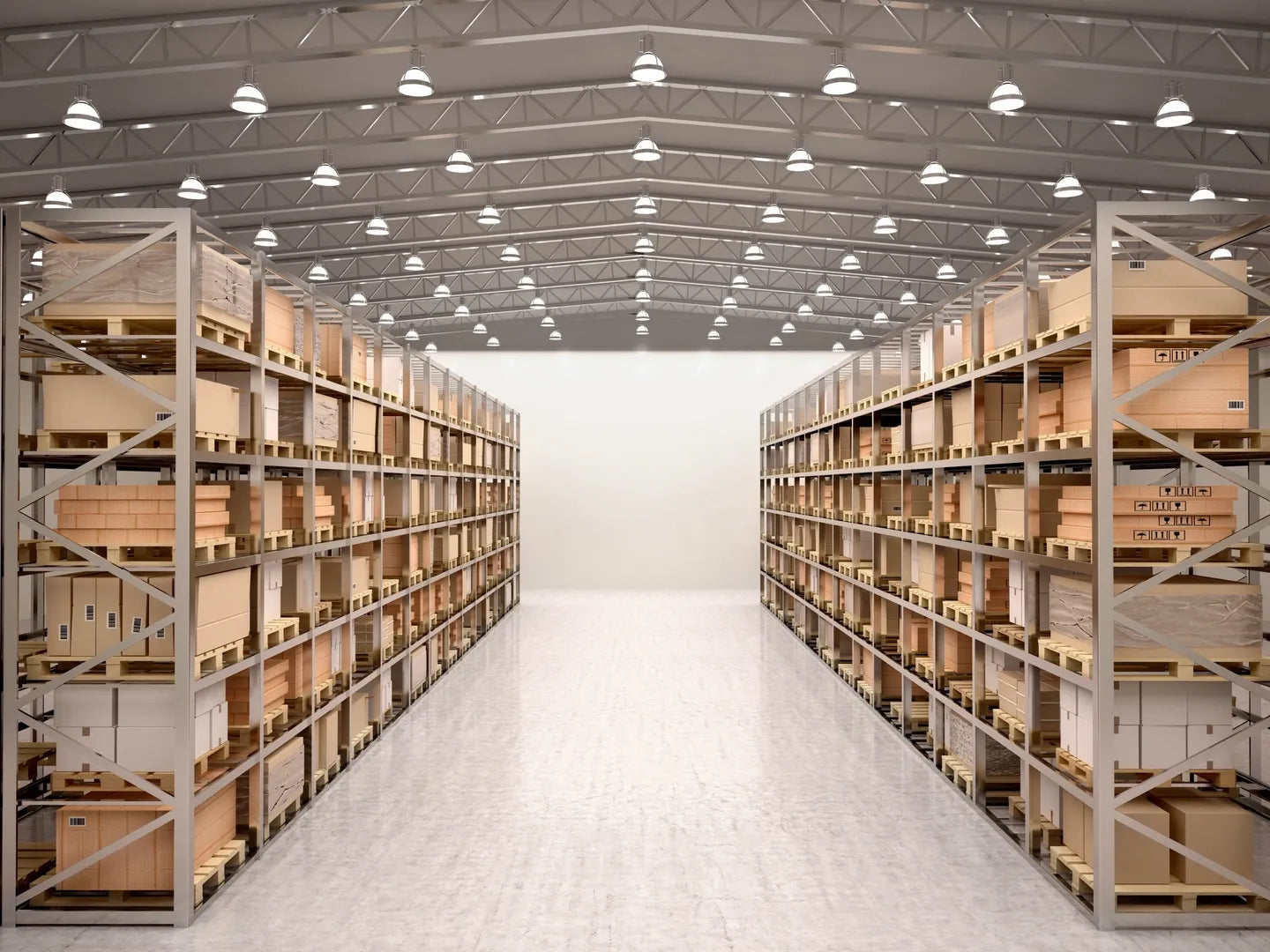Menu

How to Choose the Proper High Bay Lights for A Warehouse?
When it comes to warehouse lighting, choosing the right high bay lights is crucial for creating a safe, productive, and energy-efficient environment. With a wide range of options available, it can be overwhelming to determine which lighting solution is best for your specific needs. In this blog, we’ll guide you through the essential factors to consider when selecting high bay lights for your warehouse and explain how you can benefit from our free lighting simulation and on-site consultation.
1. Understanding High Bay Lighting
High bay lights are designed for ceilings that are typically 15 feet or higher. These fixtures provide bright, even illumination across large spaces, making them ideal for warehouses, manufacturing facilities, and distribution centers. The two most common types of high bay lights are LED and fluorescent. However, LEDs are increasingly favored due to their energy efficiency, longer lifespan, and lower maintenance costs.
2. LED Fixture Types

UFO high bay lights are characterized by their circular, disc-like design resembling a flying saucer. They are designed for high ceilings (15 feet or more) and are known for their high lumen output and energy efficiency.
- High Light Output: UFO high bays typically provide between 15,000 to 45,000 lumens, making them ideal for large spaces.
- Energy Efficient: Utilizing LED technology, these fixtures consume significantly less energy than traditional lighting, resulting in lower electricity bills.
- Durability: Many UFO high bays come with an IP66 rating, making them resistant to dust and water, perfect for harsh environments like wash bays and vapor warehouses.
- Easy Installation: Their compact design allows for straightforward installation, whether mounted directly or suspended.
 Flat linear high bays offer a sleek, elongated design that is well-suited for areas with lower ceilings or where a streamlined look is desired. These fixtures provide broad, even light distribution across large spaces.
Flat linear high bays offer a sleek, elongated design that is well-suited for areas with lower ceilings or where a streamlined look is desired. These fixtures provide broad, even light distribution across large spaces.
- Versatile Design: The flat, linear shape allows for flexible mounting options and even light spread.
- Light Output: While typically offering lower lumen output than UFO high bays, flat linear high bays can still provide sufficient illumination for various applications.
- Energy Efficient: Like UFO fixtures, many flat linear high bays use LED technology, ensuring lower energy consumption.
- Aesthetic Appeal: Their modern design adds a contemporary touch to any facility, enhancing the overall atmosphere.
3. Boosting Energy Efficiency With Sensors
Motion sensors detect movement within a designated area and automatically activate the lighting system. When a person enters the space, the sensor triggers the lights, and when the area is unoccupied for a predetermined period, the lights turn off. This automation ensures that lighting is only used when necessary. In "Boosting Energy Efficiency with Motion Sensors" blog, we explore how motion sensors work, their benefits, and tips for effective implementation in your warehouse.
4. Energy Savings Per Light (Without The Sensor)
|
Ceiling Height
|
Metal Halide Equivalent
|
LED Wattage
|
Energy
Saving %
|
Energy Saving Per 5 Years
|
|
10'~19'
|
250W
|
100w
|
60%
|
$249.60
|
|
20'~30'
|
400W
|
150w
|
62.5%
|
$416.00
|
|
31'~40'
|
750~1000W
|
200W~300W
|
70%~73%
|
$915.20~$1,164.80
|
|
40'+
|
1000W
|
300W
|
70%
|
$1,164.80
|
*The calculation of energy savings for lighting often assumes 8 hours of daily operation per light at an electricity rate of $0.16/KWH. However, the actual benefits to a business can be substantially greater due to reduced maintenance costs and potential savings on overall electricity bills.
5. Color Temperature
5000K: The most common color temperature for LED high bays, 5000K, projects a cool white light similar to daylight. This is ideal for general illumination in warehouses, manufacturing facilities, and other commercial spaces where accurate lighting is essential. 5000K also pairs well with higher CRI lighting for a more natural appearance.
4000K: While less common than 5000K, 4000K LED high bays offer a natural-looking light often preferred in workspaces. This warmer color temperature is similar to traditional lighting like HIDs and fluorescent lights, making it a popular choice in the LED lighting market.
6. How Many LED High Bay Lights Do I Need?

This chart provides a general recommendation for LED high bay light's lumen output and fixture spacing based on ceiling height. However, to determine the exact number of lights you'll need
- Ceiling height
- Dimensions of the spaces
- Facility usage
Please contact us for a more accurate lighting simulation.
- Choosing a selection results in a full page refresh.


























